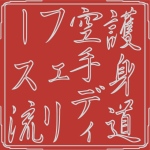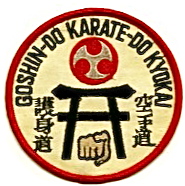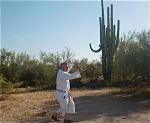
When a new student enters the Dojo, I ask the initiate what he or she hopes to achieve by undertaking the study of karate-do. The answers I receive from such potential initiates are as varied as the individuals themselves. There are, however, certain general themes that emerge. One such theme is the attainment of self-confidence. I would like to explore the effect of attaining self-confidence in this article.
Initially, I note that I will not address the mechanics of how and why karate-do and other martial arts build self-confidence. I submit that it is axiomatic that self-confidence is discovered and nurtured through karate-do. In fact any endeavor that mandates periods of introspection by the practitioner will foster self-confidence as a consequence of self-discovery. Having said that, there is a crucial turning point in the evolutionary process of self-discovery that leads to the attainment of self-confidence. The turning point is at the event horizon when one’s self is discovered, realized and defined. It is at this event horizon that one’s awareness of self breeds a sense of self-confidence. Once self-confidence is attained, the event horizon dictates that one can undertake two possible future paths.
The first path is the path that recognizes that the concept of self and the associated self-confidence is transitory and subject to continuing definition and evolution. This path is defined by the idea that while one is awakened to and confident in the person that one is, such a psychological state is merely momentary and subject to the continuum of the life experiences to be had. One’s deeds, ideas and actions are viewed as evolving. By this I mean that continued deeds, ideas and actions incubate and give birth to continued knowledge. Continued knowledge gives rise to new theories, concepts and innovations. Thus, one is confident within the boundary of acknowledging that such confidence extends to one’s ability to continue to embark on the unknown journey of life as it unfolds. If one lacked this confidence, the future unknown journey would stagnate one’s personal quest for knowledge and growth out of fear. On this path, the self-confident journeyman continues the quest in anticipation of unknown knowledge for the purpose of perpetually rediscovering oneself.
The second path is the path that views one’s achievement in the chosen field of endeavor as the pinnacle of the discovery process, to wit: has become the “best” one can be (The slogan, “Be all you can be” comes to mind). This means that one’s self-confidence is finite in place, time and achievement. This path is defined by ego. The path of ego mandates that one sees the continuum of life not as a process of continued discovery, but as a conclusion to be ratified by the remarkable person that one has become. One’s deeds, ideas, and actions are internally viewed and to be perceived by others as omnipotent and mighty. This means that one’s past deeds (emphasis added) are to be glorified in and of themselves. One’s deeds, ideas and actions are to be viewed as a historical event and as supreme and final. Of course, this is a fiction. Such self-confidence has fallen prey to the Siren’s call of ego. The paradox of this psychological path is that it results in a stagnation of personal growth to be attained by future knowledge. The result is similar to the stagnation experienced by an utter lack of self-confidence. In the former case the stagnation is caused by ego and in the latter case it is caused by fear. Thus, the fulfillment of the paradox.
Everyone is susceptible to falling prey to the draw of one’s ego. So as to be able to fend off the attraction of succumbing to the mythical Siren‘s call of ego, one needs to always bear in mind the transitory nature of life. As much as one cannot rest on one’s laurels, one must always understand that accomplishment is but a portal to future achievement. This is not to say that one need be forever humble. One can, and should, enjoy the successful feeling that comes from accomplishment. One need simply remember that accomplishment, which breeds self-confidence, should be perpetually challenged and redefined within oneself.
Again, there are many introspective endeavors wherein one can obtain a sense of self-definition and self-confidence. For myself, and others, the mechanism is the continuous study of was karate-do and specifically, the study of Kata. The principle characteristic of any introspective endeavor is that it will eventually lead the practitioner to the event horizon of choosing the path of either continuing self-discovery through knowledge or to the path of finite ego.
Since ego is self-propagated, the accomplishment that formed ego is finite and dissipates with time. History is replete with examples of the dilatory effect of ego as a factor of time. There are many examples contained in mythology, history and literature. One such example is the following poem, Ozymandias, by Percy Bysshe Shelley. It is a favorite of mine. I keep the poem in my psychological database as a reminder that the journey for knowledge never terminates. One’s momentary achievements, should be acknowledged but never glorified.
I met a traveler from an ancient land
Who said: Two vast and trunkless legs of stone
Stand in the desert. Near them, on the sand,
Half sunk, a shattered visage lies, whose frown,
And wrinkled lip, and sneer of cold command,
Tell that its sculptor well those passions read
Which yet survive, stamped on those lifeless things,
The hand that mocked them and the heart that fed;
And on the pedestal these words appear:
“my name is Ozymandias, king of kings:
Look on my works, ye Mighty, and despair!”
Nothing beside them remains. Round the decay
Of that colossal wreck, boundless and bare
The lone and level sands stretch far and away.
(See Endnotes # 1)
In closing, I remain eager to continue to tread upon “the lone and level sands (of knowledge) that stretch far and away”,
Sensei John Szmitkowski 

For a refreshing and innovative discourse on kata and bunkai, please feel free to visit Sensei John’s Kata Laboratory using this convenient link: http://senseijohn.me/2013/05/20/kata-lab-101-three-states-of-bunkai/
For details on how to “cyber-participate” in Sensei John’s most recent group Sanchin Kata session, please use this link: http://senseijohn.me/2013/04/28/sine-quo-non-sanchin-pilgrimage/
ENDNOTES:
1. Williams, Oscar, Immortal Poems Of The English Language (An Anthology), (Washington Square Press , NY, 1952) p. 295
Please enjoy our newest videos:
1. This rare video features Shihan Frank Van Lenten engaged in kumite is available by clicking the following link: http://www.youtube.com/watch?v=3hIFOV8Ge-Y
2. While archiving old video, we stumbled upon two minutes of the historic kumite with Shihan Don Nagle and Shihan Peter Urban circa 1966. I believe it may be the most footage of this kumite. You may view the footage with this convenient link: http://www.youtube.com/watch?v=YHo3I5cn8-s
Tags: Academy of Goshin-Do Karate, Ego, Goshin-Do Karate-Do, Goshin-Kai, Goshin-Ryu Karate, Isshin-Ryu Karate-Do, Kumite videos, Legends of Karate, Ozymandias, Percey Bysshe Shelley, Poetry, Self-Confidence, Sensei John Szmitkowski, Shihan Don Nagle, Shihan Frank Van Lenten, Shihan Peter Urban, Shihan Thomas DeFelice, USA Goju-Ryu Karate-Do
 Goshin-Do Karate Kyokai versions of
Goshin-Do Karate Kyokai versions of For a refreshing and innovative discourse on kata and bunkai, please feel free to visit Sensei John’s Kata Laboratory using this convenient link:http://senseijohn.me/category/kata-laboratory/
For a refreshing and innovative discourse on kata and bunkai, please feel free to visit Sensei John’s Kata Laboratory using this convenient link:http://senseijohn.me/category/kata-laboratory/ You can visit Sensei John’s personal blog at
You can visit Sensei John’s personal blog at You may also enjoy Sensei John’s martial-inspired fishing blog at http://flyfishingdojo.com
You may also enjoy Sensei John’s martial-inspired fishing blog at http://flyfishingdojo.com












Reader’s Comments